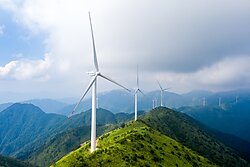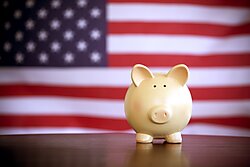-
An often-overlooked part of globalization is the free exchange of ideas, even though the global sharing of information has produced immense benefits for humanity and fueled modern abundance.
-
Through the millennia, the spread of new ideas throughout the world—not just technology but also philosophy, religion, democracy, and freedom—has accompanied global trade.
-
Trade liberalization circulates the ideas that are the sources of innovation and creates both static gains from the increased flow of trade that accrue immediately and dynamic gains that accrue gradually and are driven by innovation and the diffusion of knowledge.
-
Trade also helps spread the idea of freedom, as the gains from trade can provide people with more choices to make personal decisions about how they wish to live.
Introduction
It is well known that access to goods and services that would not otherwise be available is a benefit of international trade. Even those who would restrict trade do not completely deny this. Their preferred trade restrictions are usually founded on other premises. However, the additional benefits of international trade are not as well known. Often overlooked, especially, is the reality that goods and services do not travel alone across international borders. They are frequently accompanied by new ways of thinking and new ways of transforming thoughts into new technologies, new products, and new ways of reworking and maintaining human civilization. Ideas are not static. Ideas are not motionless. Ideas travel. And ideas travel with trade.
Indeed, the spread of ideas is one of the foremost benefits derived from trade and from other aspects of economic globalization. A good is consumed. A service is used. Direct benefits are derived; but, as a result, fewer goods and services remain. The rivalry for goods and services “underlies the scarcity that is at the heart of most of economics,” as Stanford economist Chad Jones says in a VoxEU column about Paul Romer’s ideas. In contrast, ideas are nonrivalrous; as more people use an idea, there is no less of it to go around. As Jones has explained, once an idea exists, it is “technologically feasible for any number of people to use” it “simultaneously.” Ideas widen and expand. They do not disappear because they travel.
This is not an original thought. It is one for which Romer won the Nobel Prize in Economics in 2018. Romer demonstrated that the discovery of new ideas is at the heart of economic growth, because the application of new ideas is what inspires the innovations that increase productivity and therefore drive growth. As he demonstrated—starting with a seminal article published in 1990—the human capital of knowledge, which emerges and cumulates from new ideas, must be added to the traditional factors of economic production (i.e., land, labor, and capital).
As Jones summarized, simply replicating production requires a doubling of investment to produce doubled returns. An example would be a firm building an identical second factory and staffing it with identical machines and workers across the street from the firm’s first factory. In contrast, the dissemination of new ideas results in increasing returns on production because the same idea can be used repeatedly without any additional investment. An example would be the widespread use of a novel computer source code. These increasing returns from the employment of new ideas produce economic growth. This is one of numerous reasons why increased trade creates increased growth and, thus, why economic globalization does so as well.
Trade Benefits “Intellectual and Moral”
As it relates to trade, in some respects Romer’s insight was anticipated by the 19th-century British philosopher and political economist John Stuart Mill in his classic Principles of Political Economy, published originally in 1848 and in its seventh and final form in 1870. Having first listed the direct gains from trade derived from increased imports and the indirect gains from trade resulting from improved processes of production, Mill then identified another indirect gain from trade. He explained:
The economical advantages of commerce are surpassed in importance by those of its effects which are intellectual and moral. It is hardly possible to overrate the value, in the present low state of human improvement, of placing human beings in contact with persons dissimilar to themselves, and with modes of thought and action unlike those with which they are familiar.… It is indispensable to be perpetually comparing their own notions and customs with the experience and example of persons in different circumstances from themselves.… There is no nation which does not need to borrow from others.
Examples abound throughout history of this beneficial borrowing of ideas and the ways in which trade has facilitated it. Ideas know no borders. They have never known borders. Archaeologists and historians tell us that extensive trade routes can be traced at least as far back as 8500 BC, when much-sought obsidian—a hard volcanic glass used to produce a chipped stone blade—was exported overland hundreds of miles from what is today central and western Turkey to what is today southwestern Iran and Jordan. They also tell us that seafaring trade dates from at least 7000 BC, when coastal people from the Argolid region in the Greek Peloponnese used island hopping to import obsidian from the island of Melos about 100 miles away. In 1966, the 20th-century British classicist A. R. Burn remarked in his book The Pelican History of Greece that “in its time, it was like putting a man on the moon.”
For millennia, ideas have covered long distances and crossed borders with trade. Sometimes the ideas are contained in the traded goods themselves—such as with a new way to make stone blades. And sometimes the ideas are in the minds of the people who have traveled with the traded goods, starting with the ancient trade caravans, which were not infrequently accompanied by “large numbers of people, including traders, caravan leaders, sailors and the like” and thinkers who hoped to spread their ideas, search for new ideas, or both. Ideas also have traveled with migration and with the imperial expansion of military conquest. Yet, on a day-to-day basis, the travel of ideas has been a common consequence of the more mundane commerce of trade.
As one example of the travel of ideas, in his book The Shape of Ancient Thought, the late American thinker and scholar Thomas McEvilley argued that the modern Western world must be considered a combined product of both Greek and Indian thought because of the ways in which trade and other exchanges created a mixing of ideas throughout the Mediterranean, the Middle East, and South Asia in antiquity. The late British classicist Richard Seaford maintained much the same, saying that the ideas of the Greek philosophers were influenced by those of the Indian philosophers, and, in turn, the ideas of the Indians were influenced by those of their Greek counterparts.
Trade routes, both land and sea, were also routes for new ideas that became religions. Buddhism spread along the Silk Road from India to Central Asia, China, and Northeast Asia. Later, in turn, Buddhist monks from China used the same trade routes to travel to India to find and study Buddhist scriptural texts. Similarly, the Christian apostle Paul traveled in trading vessels on his missionary journeys in the Mediterranean and contributed greatly to the early spread of the idea of Christianity. Humanity has benefited enormously from the dissemination of these and other consoling and animating forms of belief.
As still another illustration, the 20th-century Austrian and British philosopher Sir Karl Popper, in his 1945 book The Open Society and Its Enemies, traced the origin of the ancient Athenians’ “democratic tendencies” in part to their embrace of trade. Trade helps end the intellectual and other forms of isolation that keep societies such as the one in pre-democratic Athens closed. Popper said, “Perhaps the most powerful cause of the breakdown of the closed society was the development of sea-communications and commerce,” in which the Athenians were among the leaders in the ancient Aegean world. Commerce “was perhaps the worst danger to the closed society.” Then and now, trade can help pry a closed society open.
“By the sixth century B.C.,” Popper explained, the development of seafaring commerce in Greece “had led to the partial dissolution of the old ways of life, and even to a series of political revolutions and reactions. And it had led not only to attempts to retain and to arrest tribalism by force, as in Sparta, but also to that spiritual revolution, the invention of critical discussion.” As much as he emphasized the benefits of rational dialogue in his accounts of the inquiries of his mentor Socrates, this was in no small part what the Athenian philosopher Plato, with his aristocratic disdain for the bausanic commercial world, feared about the consequences of the increase of trade, foreign and otherwise.
As expressed in the dictatorial structure of his imagined Republic and in his conception of the utopian city of Magnesia in his later and longest dialogue, the Laws, part and parcel with Plato’s criticism of democracy was his criticism of commerce and of the new ideas that were furthered by trade. “To have the sea nearby,” he wrote in the Laws, may be pleasant, but “it fills the land with wholesaling and retailing, breeds shifty and deceitful habits in a man’s soul, and makes the citizens distrustful and hostile, not only among themselves, but also in their dealings with the world outside.” It also contributed to producing the individual freedom of action that Plato adamantly opposed.
Facilitated by trade, the invention of critical discussion in Athens led, a century before Plato, to the conception of the new idea that became democracy. As the British classicist Peter Green wrote in The Greco-Persian Wars, what the feudalistic Persians despised most about the Greeks, as exemplified by the Athenians, was their “addiction to trade,” and especially, “the free exchange of opinions that went with it.” The same might be said of how trade has, in the 2,500 years since and in so many places throughout the world, promoted more openness to uncounted new ways of thinking and doing and living. In particular, this can be said about the idea of democracy.
After democracy was rediscovered several centuries ago at the outset of the modern era, in the years that followed, as historian Mark Mazower recounted in Governing the World: The History of an Idea, 1815 to the Present, “The spread of democracy and trade went hand in hand.” Especially in the second half of the 20th century, even amid the Cold War between the United States and the Soviet Union, and especially in the final decade of the century, following the Soviet collapse in 1991, the advance of trade was accompanied by the advance of democracy. It is only now that the prospects for democracy appear to many to be abating. It is no coincidence that this is occurring when the growth of trade is slowing amid a global backlash of protectionism led by an increasingly insular United States.
The “civilizing virtues of commerce” have long been thought to have a tempering effect on the worst tendencies among us. Trade has long been portrayed as a harbinger of peace. The idea of free trade itself, which has traveled alongside the increasing exchange of goods and services it creates, has long been linked—in David Ricardo’s words—with the hoped-for creation of a “universal society of nations in the civilized world.” Overall, the evidence suggests that trade does promote peace. Even so, the highest of the hopes of those who have sought free trade have yet to be realized. Nowadays, it sometimes seems that trade leads to conflict almost as much as it leads to comity. Witness the ongoing “trade war” between the United States and China. Still, the hopes remain.
Trade and Innovation
Marian L. Tupy and Gale L. Pooley have trumpeted a “superabundance” that they say results in part from how the communication networks that are created and conducted by trade add to the abundance of tangible, technical, and ideational resources available to humans—an abundance that is growing faster than the human population. This growing gap exists, they maintain, because, on average, every additional human creates more value than they consume. More people produce more ideas, which leads to more innovation. They explain, “People then test those inventions in the marketplace to separate the useful from the useless. At the end of that process of discovery, people are left with innovations that overcome shortages, spur economic growth, and raise standards of living.”
It is, Tupy and Pooley tell us, the further flowing of a crescendo of ideas that matters most, even amid what seem to be declining amounts of threatened natural resources; for, as they explain, ideas are the sources of the innovations that will ensure a flourishing future, in part by helping us tame the threats to natural resources. They emphasize, though, that, “to innovate, people must be allowed to think, speak, publish, associate, and disagree. They must be allowed to save, invest, trade, and profit. In a word, they must be free.” It is thus, they conclude, not additional population growth that can create a brighter future for humanity. It is additional human freedom.
The abundance of available resources they describe as superabundance is a result in no small part of freer trade. Because of trade, we have had access to new ideas that we have made into reality and thereby into change. Because of the ideas that have enriched human civilization through the exercise of human freedom, says the American political economist Deirdre McCloskey,
Since 1800 the ability of humans to feed and clothe and educate themselves, even as the number of humans increased by an astonishing factor of seven, has risen, per human, by an even more astonishing factor of 10. Do the math, then, of total production. We humans now produce 70 … times more goods and services worldwide than in 1800.… With 70 times more production, no wonder we can cultivate new economies of scale and reap their benefits through free trade.
The connection between trade and innovation can be summed up briefly (and in echo of Adam Smith, David Ricardo, and the legions of economists who have learned from their classical thinking and have—like Romer—added their own nuances and further insights to it). To begin, trade creates a division of labor in which people specialize in making and doing what they make and do relatively better than other people. This creates gains from trade because—through this specialization—all those who are engaged in the individual transactions of trade maximize their own productivity. This in turn helps maximize overall production through the most efficient allocation of labor and human capital as factors of production. This is Ricardo’s classic concept of comparative advantage, and this much about the benefits from trade is familiar.
Less familiar is what follows as a further outcome from this specialized division of labor. As the Harvard economist Marc Melitz and the Princeton economist Stephen Redding have observed, one of the key insights of recent research on innovation and growth is that the pace of innovation is determined by the expectation of future profits. Therefore, “as international trade is a key determinant of firm profitability, through both the size of the market and the extent of product market competition, it is natural to expect it to play a key role in shaping innovation and growth.” Theirs and other research indicates that trade liberalization creates “static” gains from the increased flow of trade that accrue immediately and “dynamic” gains that accrue gradually and are driven by innovation and knowledge diffusion.
These “dynamic” gains from trade liberalization result from access to larger markets, increased market competition, increased specialization based on comparative advantages in production, and “international knowledge spillovers … (that) directly affect countries’ rates of economic growth … (because) international trade in goods itself can be a conduit through which ideas spread around the world.” Melitz and Redding explain further:
These knowledge spillovers can facilitate catch-up to the world technology frontier and can accelerate the rate of advancement of this world technology frontier. Trade can influence knowledge spillovers through changing both the set of firms selling in a market and the set of firms producing in a country. Knowledge spillovers may occur serendipitously, or as a result of either direct investment in knowledge acquisition, or more indirectly via imitation of more advanced products (leading to product cycle, in which products are first invented in some parts of the world, and then imitated in others).
Economists have shown that the effect of productivity growth in individual economic sectors on structural transformation and economic development “hinges critically on whether the economy is closed or open to international trade,” according to Melitz and Redding. A Federal Reserve Bank of St. Louis working paper similarly finds that “changes in trade costs have a quantitatively important effect on innovation.” The reduction in the costs of trade by freeing trade causes a reallocation of research and development to areas in which there is a comparative advantage. The paper concludes that, “Knowledge diffusion amplifies this effect, as comparative advantage is re-allocated towards sectors with greater knowledge flows. Furthermore, knowledge spillovers allow sectors in a country to benefit from a larger pool of ideas, increasing growth.” Through trade, the acquisition of knowledge and its translation into innovation becomes cumulative.
COVID-19 Vaccines Showcase Ideas Exchange
In today’s world, the diffusion of knowledge that contributes to innovation often transcends political borders and produces immense benefits for humanity. The COVID-19 mRNA vaccines serve as a recent example of those benefits and as a testament to the collaborative endeavors of diverse minds within an interconnected world. Although a wide array of US policymakers and pundits hailed the COVID-19 vaccine as a marvel of American ingenuity, the real story is one of global collaboration, The vaccine production showed reliance on the relatively free flow of knowledge, capital, people, and goods across borders—as well as the global distribution networks upon which they relied.
As my Cato colleague Scott Lincicome has explained, the scientific foundation of the new vaccines was developed in the United States by mRNA researchers—and now Nobel laureates—Katalin Karikó (a Hungarian immigrant) and Drew Weissman. Their work formed the basis for the vaccines themselves, which depended on the heroic acts of Chinese researcher Yong-Zhen Zhang and Australian Eddie Holmes (who shared critical virus data in its early days) and were produced by two rival international teams. First to market was the vaccine from the partnership of BioNTech, a German company founded by Dr. Ugur Sahin and his wife, Dr. Özlem Türeci (both of Turkish descent), and Pfizer, the New York–based multinational company run by Albert Bourla (a native of Greece). Shortly thereafter came the second mRNA vaccine, made by Boston‐based Moderna, which was founded by Canadian Derrick Rossi and two-time immigrant Noubar Afeyan and run by CEO Stéphane Bancel, who immigrated to America from France. Both teams received financial and regulatory assistance via the US government’s Operation Warp Speed, which was managed by Moncef Slaoui, the Moroccan-born Muslim immigrant from Belgium.
Manufacturing the vaccines relied on new and existing supply chains—Pfizer’s entailed 35 facilities and 300 global suppliers—funded by governments, international organizations, and global capital markets (shareholders, banks, venture capital firms, hedge funds, and others). Companies such as German-headquartered DHL and Lufthansa and Atlanta-based UPS ensured the vaccines’ distribution around the world, utilizing new ultra-low temperature freezers and pharmaceutical storage hubs at major airports.
The vaccines’ rapid production and distribution was miraculous and could not have happened without global collaboration and the seamless dissemination of ideas—a process undergirding scientific innovation today. As the Institute for Scientific Information reported, the scientific research of the United States is increasingly globalized (Figure 1); moreover, the most frequent foreign collaborators with American scientists are not scientists from the United Kingdom or Germany or Japan; they are scientists from China (Figure 2). In a highly diverse network of research partners, China is our most frequent partner in technology research and is as frequent a partner as the United Kingdom and Germany in research in the physical sciences. While their two countries clash over geopolitics, American and Chinese scientists continue to collaborate and innovate. This collaboration contributes to the continuing role of the United States as a leader on the “endless frontier” of science and helps add to our service through science to the creation of technologies that help uplift all of humanity.
Trade and the Idea of Freedom
Contemporary trade conflicts are not mainly inspired by the act of trade itself; they are not solely economic confrontations. To be sure, the widespread misperception of overall “job losses” from trade is unquestionably a motivating factor in causing these trade conflicts. Increasingly, too, they are motivated by concerns, legitimate and otherwise, about national security. But these trade conflicts are often consequences of the broader and deeper conflicts between and among countries about the concept and value of human freedom. Those who restrict trade on both sides of these commercial conflicts—whatever their professed motivations—are, in effect, restricting the flow of the idea of freedom. In particular, those who favor freedom but restrict trade are forgetting how much trade has contributed to supporting the idea of freedom.
We may rightly wonder why the ideas that travel with trade translate into more innovation but do not always seem to translate, at least in the near term, into more freedom. A case in point is communist China, where several decades of gradual economic opening—until the mercantilist retreat following the ascendancy of President Xi Jinping in 2013—have not produced, at least to the eyes of most outsiders, any opening to the idea of freedom. The obvious answer is, ideas travel better, including through trade, where there is freedom of thought, freedom of speech, and freedom for the exchange of ideas. Where these freedoms do not exist, the spread of ideas, new and old, can be slowed, if not always entirely suppressed. This can be true of the idea of freedom itself.
However, an extensive engagement with China and Chinese people through several decades suggests that the idea of freedom has spread more broadly than is generally realized within China and among millions of individual Chinese, in part through trade, and that it is taking all that an oppressive Chinese government can muster to confine and contain it. Americans and others outside of China should not make the mistake of confusing the Chinese government with the Chinese people, who are mostly suppressed by their government. It is true that the Chinese people remain mostly without freedom. It is not true that the Chinese people do not want to be free or that the opening to freer trade by China—now much reversed—has not spread the idea of freedom in China.
At the same time, those who would propose severing the economic ties between the United States and China should pause to consider—in addition to the unlikelihood of such a decoupling—the preferability of taking a more nuanced and thus potentially more effective approach to US-China trade and to US-China relations in general. As one example of the probable consequences of further disengagement between the two countries, it is likely that it will lead to less collaboration between American and Chinese scientists, which, until recently, has inspired innovation in both countries. Further decoupling could lead to less innovation in each of them.
In America, trade brought tea from China that was taxed by the British so dearly that it prompted the rise of the idea of “no taxation without representation” and the Boston Tea Party in 1773, which led to the triumph three years later of the idea of American independence that, following the American Revolution, led to the establishment of the American democratic republic. In the 20th century, trade manifested the success of American democratic capitalism worldwide and thus expanded the wide appeal of the American experience of the idea of freedom. Today, among many possible examples, not only does America’s trade in goods continue to transport ideas but so too does its trade in services, which spreads knowledge throughout the world by providing online health care, education, and much more for many millions of people who are not Americans. By disseminating knowledge, this transport in goods and services buttresses the notion that among the benefits of trade are the blessings of the products of freedom of thought.
Freedom, as Popper taught us, is about choosing. Freedom is about being able to make more “personal decisions” about how we choose to live. In a closed society, our decisions are made for us. In an open society, we have the freedom—and the responsibility—of making our decisions for ourselves. More trade does not guarantee more freedom; the gains from trade can be hoarded by the few and thus diminished for the many. But when the gains from trade are widely enjoyed, and thus realized for all, trade both conveys the idea of freedom and makes more freedom possible. As I wrote in Trade & Freedom, trade can give us more choices that will help us make more of the right choices while living free. Moreover, trade can help us create more capability for becoming and remaining free. Trade helps create freedom, and trade helps sustain freedom. More trade means more opportunities for personal choices and thus more opportunities for freedom.
The impact of trade in ideas historically is difficult to document and measure. As the Australian philosopher Peter Singer has observed, “Ideas leave no fossils.” Yet, that impact has occurred again and again, and it has been significant in the long course of the rise and spread of human civilization. One of the many things that Adam Smith got right in the 18th century was seeing trade as a form of communication. As he saw it, trade was—in our current terminology—a method of, as Lynne Kiesling has said, “increasing our connectedness through communication networks.” These trade-related communication networks not only produce more goods and services but also produce and transport more new ideas. The idea of freedom may be the most important idea communicated by these networks; but it is far from the only one.
Conclusion
The connection between trade and the innovation inspired by new ideas is clear from history and from the empirical evidence. Trade has often opened the door to something new. This something new has often led to something more for those who have embraced it. It may be a new way of seeing. It may be a new way of understanding. It may be a new way of believing. It may be a new way of coming together to engage in the collective action of human governance. It may be a new way of creating more and better economic growth through more innovation. The connection between trade and innovation is only one dimension of the connection between trade and ideas. It is, however, a vital one. Increasing the flow of ideas through trade increases innovation. Limiting the flow of ideas through trade limits innovation. Thus, limiting trade also limits our prospects for the changes that are required for the full flourishing of individuals in a prosperous human civilization that will benefit everyone everywhere.

This work is licensed under a Creative Commons Attribution-NonCommercial-ShareAlike 4.0 International License.














